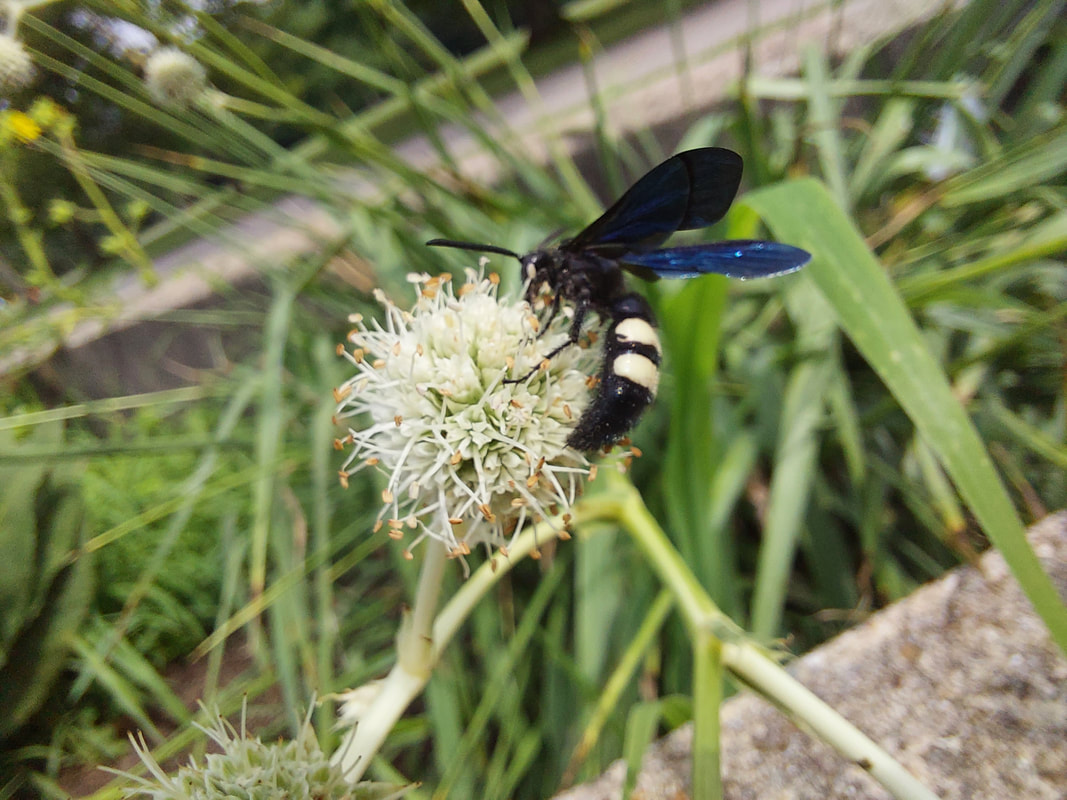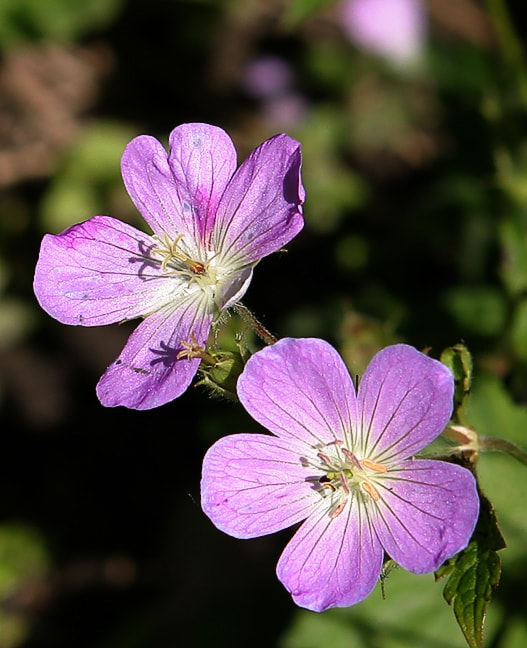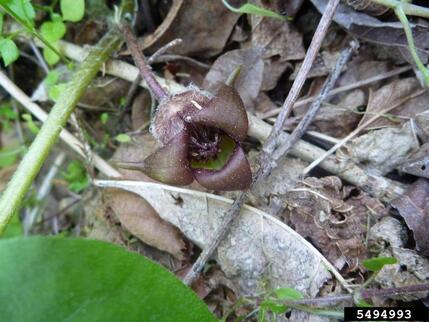|
Did you know that you can thank a pollinator for 1 in 3 bites of food! Pollinators help our food supply to be plentiful and enable us to grow fruits and vegetables! Warren County SWCD believes it is important to help our pollinators! Here are some tips from USDA that will help keep our pollinators plentiful!
Additional Resources: USDA - The Importance of Pollinators - https://www.usda.gov/peoples-garden/pollinators Pollinator Partnership - https://www.pollinator.org/pollinators Xerces Society - https://xerces.org/ OSU Bee Lab - https://u.osu.edu/beelab/ Pollinator Pathway - https://www.pollinator-pathway.org/ For more information regarding pollinators, Warren County Soil and Water Conservation District programs and/or technical assistance on water or soil questions, visit http://warrenswcd.com or call, 513-695-1337.
3 Comments
G. maculatum, Hardyplants at English Wikipedia, Public domain, via Wikimedia Commons April is Native Plant Month in Ohio! And while many of us wish to incorporate native plants into our landscape, some of us are dealing with shade in that landscape and struggle to find what might grow in this environment. Native shade loving plants are a nice choice for shady areas because it is an opportunity to mimic a naturalized forest structure. Native plants add biodiversity needed to attract beneficial insects and songbirds that are generally found in wooded areas
According to the University of Delaware, research shows that aiming for a minimum of 70% native plant cover in your landscape is essential to provide enough food to support birds into adulthood. Researchers termed the areas with less than 70% a “habitat sink” or a place that is insufficient to support long-term bird survival or the survival of their young. As with any type of garden you must consider the growing conditions (moisture, soil type, light, pH). With shade gardens you also need to ask yourself, what type of shade does your garden have? Is some light being filtered through the trees? Or is it shady part of the day and sunny the rest? Typically, light shade means that the growing area has between 3-5 hours of direct sun. Partial shade equates to about 2 hours of sun a day and full shade means less than an hour of sun per day. In the case of dense shade, or no direct sun, growing conditions can be very limited and one should consider the fact that no plants may survive in this type of growing situation. Some native woodland species that attract beneficial insects to consider for your shade garden are:
Native plants provide many benefits to us, our natural resources, and local ecosystem. These benefits include but are not limited to water conservation, filtering out water pollutants, lowering maintenance requirements, and providing vital habitat for birds and many other species of wildlife. For information on the Warren County Soil and Water Conservation District annual plant sale go to https://www.warrenswcd.com/. If you have additional questions, please contact the Warren County Soil and Water Conservation office at 513-695-1337. Ohio’s native plants provide many wonderful benefits to pollinators, Ohio’s economy, and the health of Ohio’s ecosystems. We can see many of these common natives right here in Warren County! 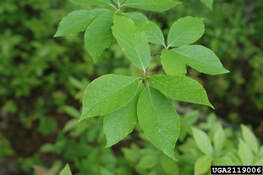 Black Gum Tree Black Gum Tree (Nyssa sylvatica), otherwise known as black gum, black tupelo or sour gum, is a native for most parts of Ohio. This tree has a wonderful glossy dark green foliage in the summer and turns to a bright orange-red in the autumn. At maturity, this tree has a oval shape and can reach heights of 60’ with a width of 25’. The black tupelo strongly prefers moist, well-drained, acidic soils but adapts to average, alkaline soils. This tree need full sun to partial sun to grow well. Reference: http://forestry.ohiodnr.gov/tupelo Photo credit: Chris Evans, University of Illinois, Bugwood.org 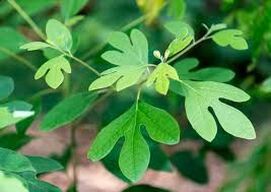 Sassafras Sassafras (Sassafras albidum) is an aromatic, native tree found in wooded areas of Ohio. It is part of the Lauraceae family that includes such genera as spicebush (another great native) and avocado. This tree prefers moist, well-drained, soils and can reach a size of 30-50' in height and 25-40' in width. The leaves are uniquely shaped and can range from three lobed, mitten shaped to unlobed. Reference: https://bygl.osu.edu/node/739 Photo credit: Ansel Oommen, Bugwood.org 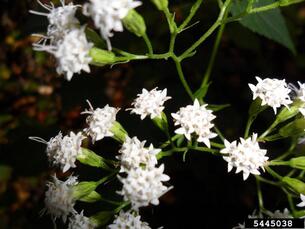 White Snakeroot White snakeroot (Ageratina altissima) is a herbaceous perennial plant that is often considered a weed because of its toxicity to animals and humans. It is part of the sunflower family and is identified by the white disk flowers that appear in late summer and early fall. It has an interesting history as it was known to cause “milk sickness”. Milk from cows who had ingested this plant would contain high levels of the toxin tremetol. Numerous early settlers, including Abraham Lincoln’s mother, became afflicted and/or died from milk sickness in the Midwest. Reference: https://u.osu.edu/dassler.1/2014/09/14/eupatorium-rugosum/ https://nature.mdc.mo.gov/discover-nature/field-guide/white-snakeroot Photo credit: David Stephens, Bugwood.org 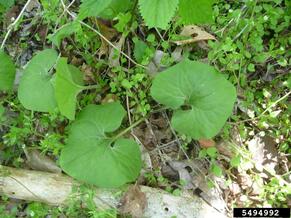 Canadian Wild Ginger Canadian wild ginger (Asarum canadense) is a perennial, low growing plant (4-8" high) that blooms in April, May and June and is typically found in shady areas. This is a colony forming (you will typically find more than one in the same location) plant that produces a pair of large, velvety, heart-shaped leaves. A ginger plant produces one flower at the base of the two leaves which can be dark red-brown to green-brown color. This plant is becoming more popular with gardeners as a low maintenance groundcover for shade areas. This plant attracts butterflies and is a larval host to the pipeline swallowtail butterfly. Reference: https://www.wildflower.org/plants/result.php?id_plant=asca https://hgic.clemson.edu/factsheet/wild-ginger/ Photo credit: Karan A. Rawlins, University of Georgia, Bugwood.org 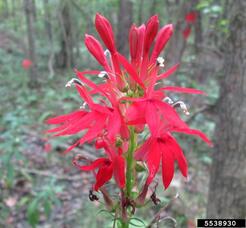 Cardinal Flower Lobelia cardinalis or cardinal flower is a native wildflower that grows in marshes, streambanks and low wooded areas. Cardinal flower has extremely showy red blossoms that grow on a spike. This plant is a must if you want to attract butterflies and hummingbirds as the color is irresistible to these creatures! Cardinal flowers can be grown in full sun or very light shade. The plants require moisture for good growth and they can be planted on the edge of a pond or marsh area. Reference: https://www.fs.fed.us/wildflowers/plant-of-the-week/lobelia_cardinalis.shtml Photo credit: David Stephens, Bugwood.org |
Details
Warren County SWCD Staff BlogA blog to keep you informed on all the latest news at Warren County SWCD and in the conservation world. Archives
May 2024
Categories
All
|
|
|
Contact:PHONE: (513) 695 - 1337
EMAIL: [email protected] HOURS: Monday - Friday 7:30am - 4:00pm (except holidays) Connect:Warren County Soil & Water Conservation District Copyright © 2016
Warren SWCD Privacy Notice. Emails are serviced by Constant Contact. Constant Contact's Privacy Notice. |
